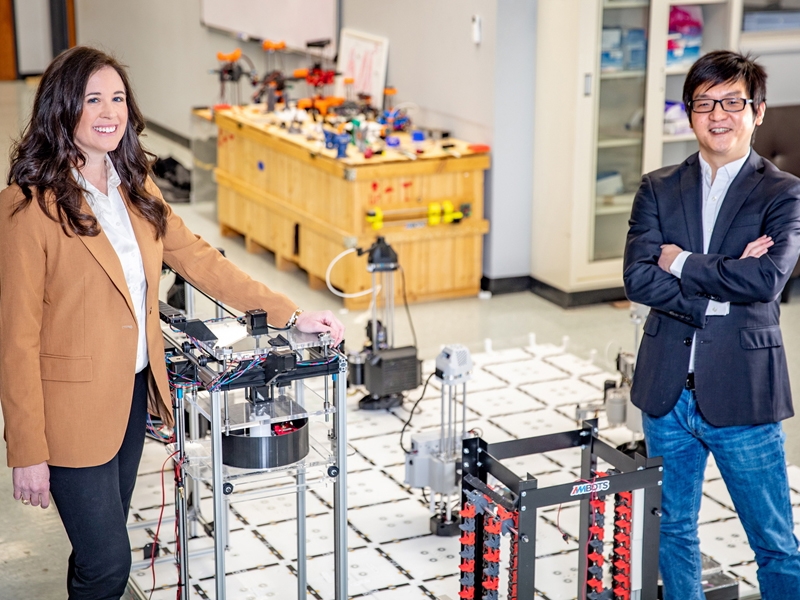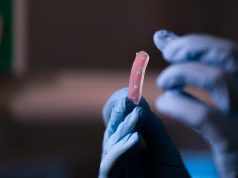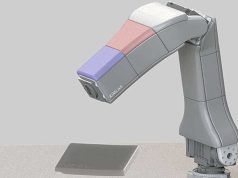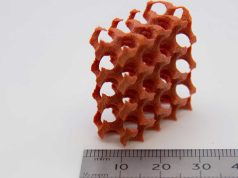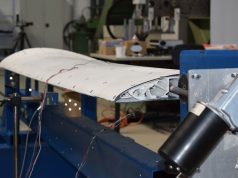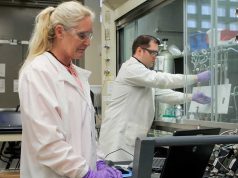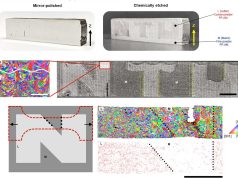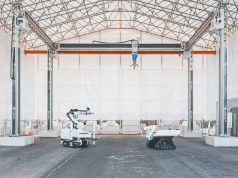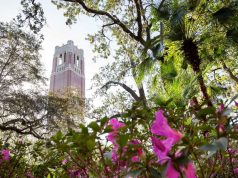Applied Research Associates, a New Mexico-based research and engineering firm, awarded nearly $3.5 million to the University of Arkansas to study the most practical options for 3D printing with concrete for the U.S. military.
The faculty team will work to identify optimum design patterns and indigenous materials that can be used in horizontal construction projects (such as creating culverts, T-walls and Jersey barriers), as well as develop printing instructions for mobile robots that can be deployed quicky on site.
Michelle Barry, an associate professor of civil engineering, will serve as the principal investigator of the two-year grant. Wenchao Zhou, an associate professor of mechanical engineering, and Cameron Murray, an assistant professor of civil engineering, will serve as co-PIs.
Barry, who oversees the Granular Materials Research Laboratory, will have a number of responsibilities. Among them will be exploring new material structures and geometric configurations to optimize performance and efficiency. This will include examining biomimetic structures – meaning they mimic naturally occurring designs, such as honeycomb patterns — that can reduce material use while increasing strength.
Barry will also be cataloguing and characterizing a range of indigenous soils to determine their suitability for incorporation into concrete. The idea is that an expeditionary force will be able to deploy and make use of local materials in horizontal construction rather than shipping cement and aggregates across vast distances. The force would instead have a convenient catalog of recipes for concrete mixes adapted to local conditions with the assurance it can be pumped through nozzles and 3D printed with requisite robots on site.
Murray, who specializes in concrete, will assist with analyzing the composition of the concrete as well as large-scale testing of experimental forms.
Zhou, who is the director of the Advanced Manufacturing, Modeling and Materials Lab at the U of A, is also the co-founder of AMBOTS, a local startup company developing “swarm manufacturing technology.” Zhou’s job will be to oversee the conversion of the CAD models created by the team into machine instructions. This is easier said than done, as it will involve laying down printing paths for a range of materials and designs, and eventually incorporating multiple robots.
AMBOTS will lead the software development for the construction of 3D printing robots. The robots are expected to work independently as well as collectively and be able to adapt to different mixes. Other considerations include ensuring a high degree of precision in printing large scale jobs, development of a mobile platform that can be deployed quickly in a range of environments and the ability to power the overall system.
Both graduate students from Zhou’s lab and employees at AMBOTS will be conducting the work.
Getting a prototype done in two years is a tall task, but Barry anticipates mobilizing as many as 18 graduate students, post-doctoral students and research technicians, as well as welcoming additional faculty into the project. Funds from the award will also be used to acquire a large format 3D printer, as well as additional equipment for soil and concrete characterization.
Barry indicated that using indigenous soils has been an area of interest to her for some time, largely due to the lower impact on the environment.
“Humans have been building with soils for thousands of years, but 3D printing soils enables us to use soils in new and exciting ways. We can build structures or roads in disaster relief areas,” she said, “where you’re just bringing in a piece of equipment because you might not be able to bring in other construction materials. If the local soils will work, you print with them for the time being, people are sheltered and then once it’s not needed, it dissolves back to the original landscape.”
The project is also a great chance for AMBOTS to demonstrate what it can do.
“We’re excited to have the opportunity to work with ARA and leverage their industry knowledge and experience to develop cutting-edge 3D printing capabilities,” Zhou said. “This grant will enable us to invest in research and development, driving the innovation of our swarm 3D printing technology and unlocking new possibilities for the future of construction and other industries.”
The $3.5 million subaward comes as part of a larger $12 million award ARA received from the United States Army Engineer Research and Development Center.
Find out more about Applied Research Associates at ara.com.
For more information about University of Arkansas, please visit uark.edu.
Subscribe to our Newsletter
3DPResso is a weekly newsletter that links to the most exciting global stories from the 3D printing and additive manufacturing industry.



